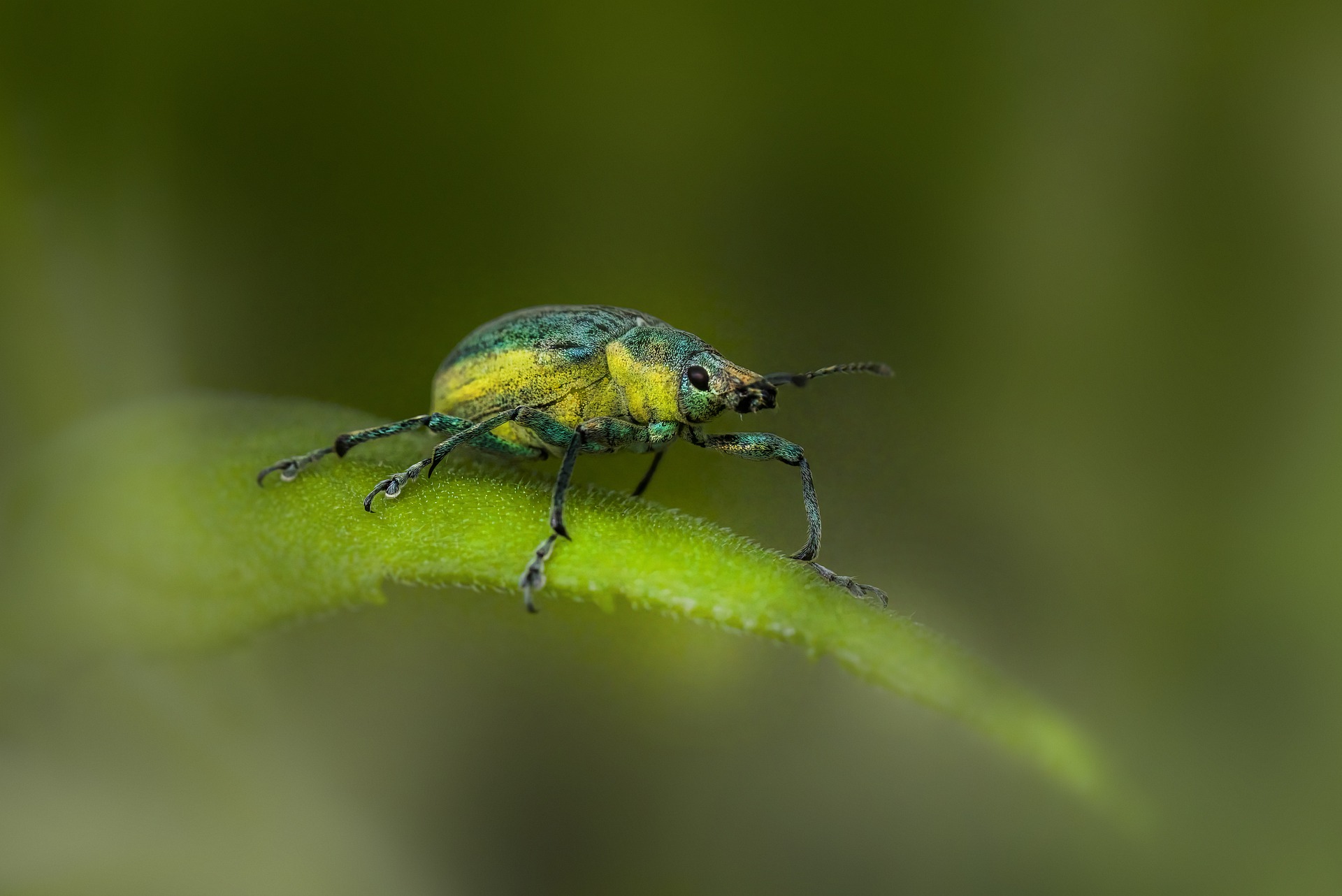That’s a fascinating request! You are asking about the Green-bordered Weevil (Chlorophanus viridis), a vibrant member of the broad family of snout beetles (Curculionidae).
Here is a deep review of its characteristics, life cycle, and ecology.
🔬 Green-bordered Weevil (Chlorophanus viridis) Deep Review
1. Classification and Morphology
| Feature | Detail |
| Order/Family | Coleoptera (Beetles) / Curculionidae (Weevils or Snout Beetles) |
| Size | Medium-sized weevil, typically measuring 8–12 mm in length. |
| Coloration | The beetle’s actual exoskeleton is black, but it is almost entirely covered by a dense layer of minute, hair-like scales (setae). This scaling gives the weevil its characteristic bright, iridescent metallic green or gold-green color. |
| Key Feature: Border | The name “Green-bordered” is descriptive; the green coloration is often particularly dense and bright along the edges of the elytra (wing covers) and the pronotum (the segment behind the head), giving a distinct bordered appearance. |
| Rostrum (Snout) | Possesses a short, broad rostrum, typical of the Entiminae subfamily (broad-nosed weevils). The antennae are elbowed and inserted into the side of the rostrum. |
| Scales | Like many weevils of the Phyllobius and Polydrusus genera, the scales are easily rubbed off with age, leading to older specimens appearing much darker or nearly black in patches. |
2. Distribution and Habitat
- Geographic Range: Primarily a Palaearctic species, distributed across Central and Eastern Europe, extending into Siberia and parts of Western Asia. It is often common in areas where its larval host plants are abundant.
- Habitat Preference: It is generally found in areas with low-growing herbaceous vegetation and small shrubs:
- Primary Habitats: Open dry meadows, heathlands, sunny woodland edges, scrub, and sometimes gardens.
- Arboreal/Terrestrial: Adults are most active on the foliage of their host plants but may also be found moving across the ground.
3. Life Cycle and Ecology
- Adult Stage (Foliage Feeder):
- Adults emerge in the late spring and summer (May to August).
- They are polyphagous leaf feeders, meaning they feed on a variety of plants, chewing small holes or notches into the leaves.
- Host plants include various members of the Asteraceae (daisy) family, such as knapweeds (Centaurea) and ragwort (Senecio), as well as broad-leaved trees and shrubs like Alnus (Alder) and Salix (Willow).
- Larval Stage (Root Feeder):
- The female lays her eggs in the soil near the host plants.
- The larvae are subterranean (live underground) and are oligophagous (feed on a limited range of plants).
- They feed primarily on the roots of perennial herbaceous plants and possibly small shrubs.
- The larval stage is long, and the beetle typically overwinters as a larva or occasionally as a pupa.
4. Ecological Role
- Predator Prey Dynamics: The bright metallic coloration may provide a degree of camouflage against green foliage, but the weevil is a common prey item for many species, including birds, predatory ground beetles, and spiders.
- Pest Status: C. viridis is generally not considered a major agricultural pest due to its preference for wild host plants and its relatively localized distribution. It is mainly of ecological interest due to its specific feeding niche among the many root-feeding weevils.
Visited 907 times, 7 visit(s) today
Views: 1635
Subscribe to the newsletter:
